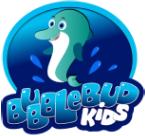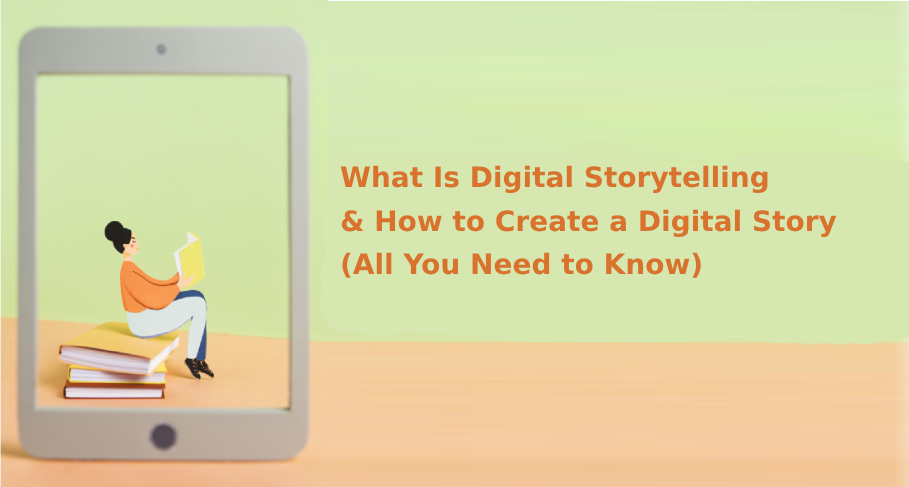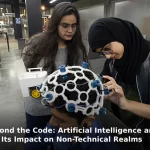Digital Storytelling is the combination of art and technology. It is often portrayed as a way for people to make their stories more accessible to a broader audience. Simply put, digital storytelling is the art of bringing stories to life on the web using computer-based tools. It refers to the process of narrative expression, allowing stories to be perceived through multiple senses, such as sight, sound, touch, and reading. This form of communication can be enriched by integrating multimedia elements like graphics, audio, video, and web-based publishing.
Digital Storytelling is known under several other names, including online storytelling, interactive storytelling, digital documentaries, computer-based narratives, digital essays, digital stories and electronic memoirs. However, as was already said, they all generally centre on fusing the craft of storytelling with other forms of multimedia.
Characteristics of Digital Stories and Its Usage
Unlike traditional storytelling, digital stories often feature a specific subject and perspective. As the name implies, they incorporate a blend of computer-generated visuals, written text, recorded voice narration, video clips, and music.
Although the length of a digital story might vary, most used in education typically range between two and ten minutes. Digital Storytelling covers many subjects, from personal stories to retelling historical events, from examining one’s neighbourhood to looking for life elsewhere in the universe and practically everything in between.
Evolution of Digital Storytelling
Digital Storytelling, however, is not a new practice. Initially, digital storytelling was defined as related to video production, animation, and web design. However, digital storytelling has evolved tremendously over the past 20 years.
One of the field’s most noted pioneers, Joe Lambert, the co-founder of Center for Digital Storytelling (CDS), a non-profit community arts organization in Berkeley, California, has already been helping children and adults create and share personal narratives via the use of intelligent writing and digital media tools since the early 1990s.
Another pioneer, British photographer and author Daniel Meadows defined digital storytelling as a way to tell personal stories and work with multimedia technology. He emphasizes that these stories can be described by anyone, on any subject, in any medium, across the world.
This medium’s visual nature separates digital stories from other narrative forms. New technology allows creating, sharing and viewing these stories online. Digital stories can be as simple as a film strip composed of photos or moving images uploaded to websites. It also encompasses video editing software and web tools like iMovie, CapCut’s AI Video Generator, Microsoft Sway, etc., allowing users to “storyboard” their projects and turn them into digital storytelling productions. digital storytelling
John Seely Brown, a researcher and consultant on digital culture, finds it intriguing that digital storytelling allows for the use of many media to tell stories and that children today, who are growing up in a digital world, can come up with new ways to tell stories. They may easily create interpretive films and include music in the story. The context around the content might be “sculptured” or “conditioned.” What film—and rich media—are about is fundamentally reliant on the complex interplay between context and content.
Digital Storytelling in Education and the Pioneers in the Field
Digital Storytelling—creating and sharing stories in digital form—has become an integral part of our lives. From the day we are born to the time we retire, digital storytelling is used in all facets of life, from education to business and community organizing.
Digital storytelling is an effective tool in education that helps to bridge the gap between teacher and student, creating a more collaborative learning environment. It provides instruction in various content areas tailored to specific age groups. Digital storytelling also opens up opportunities for collaboration and dialogue among students from different grade levels, teachers, and parents.
According to the Institute of Progressive Education and Learning, digital stories are frequently presented in appealing, emotionally engaging formats. The idea can be used in digital narratives, including interactive, web-based, and hypertext storytelling. For instance, readers can navigate between text nodes in hypertext literature by using hypertext links.
Similar to conventional storytelling, most digital stories have a single, narrow subject and one point of view. The length of these tales can vary, but instructive digital tales often range between two and ten minutes.
Innovative edtech platforms are harnessing digital storytelling to impart education. On the service provider side, BubbleBud Kids is one such player who is a pioneering force in revolutionizing early childhood education, seamlessly blending cutting-edge technology with engaging instructional methods. Among its standout innovations is adopting digital storytelling within its educational repertoire. This strategy leverages compelling narratives enriched with vivid visuals and interactive features to captivate young learners.

BubbleBud Kids simplifies complex ideas, ignites the imagination, and cultivates a passion for discovery. It has successfully leveraged the concept of digital storytelling to elevate understanding, improve memory retention, and encourage creative thinking in preschoolers. Doing so has redefined what educational excellence looks like, turning the learning process into an adventure that children look forward to with excitement.
On the platform side that helps you create a digital story, we have compiled a list at the end of this article.
Who can be a Digital Storyteller?
A Digital Storyteller can be anyone who desires to document life experiences, ideas, or feelings through stories and digital media. These individuals often need more experience in video production. Still, with time invested in a workshop, they can learn about and practice creative techniques with encouraging facilitators and get equipped with the required skills to develop compelling and relevant stories.
With the advancement of technology, especially with the introduction of AI-based web applications, the process has become much simpler. With the right tool, even toddlers can easily create and share their digital stories. Joe Lambert asserts that certain factors must be considered when creating a digital story. These components can be a jumping-off point for the process, even though Lambert claims that aspiring digital storytellers don’t require a specific formula for writing a story.
How to create a Digital Story?
Digital Stories offer a captivating method of sharing and learning knowledge through digital tales. Using multimedia components like text, audio, video and photographs, one can create an array of stories aligned to the objective. Using digital storytelling in the classroom can help teachers encourage creativity, improve critical thinking, and give students the tools to take an active role in their education.
Here is an insightful video that breaks down the process into 5 steps:
- Start with an idea
- Write your story
- Create a storyboard
- Research and gather elements
- Build your story
Digital Storytelling Tools
Here are some digital storytelling tools that can surely help you kick-start your journey of digital storytelling:
- CapCut’s AI Video Generator: Effortlessly transforms basic text prompts or images into visually engaging videos, enhancing your storytelling impact (Read more here).
- Microsoft Sway: Create interactive reports, personal stories, and presentations without design skills, making your content stand out.
- Canva: Easily design visually appealing content using multimedia elements like images, text, and videos, perfect for storytelling.
- Animoto: Craft compelling videos by combining photos, videos, and music, ideal for engaging storytelling.
- MakeBeliefsComix: Create comic strips easily, adding characters, emotions, and dialogue to tell your story.
- StoryJumper
- Plotagon Story
- Little Bird Tales
- Pixton Comic
- Elementari
Read also: Digital Storytelling During the Pandemic – Tips & Tools for Teachers.


